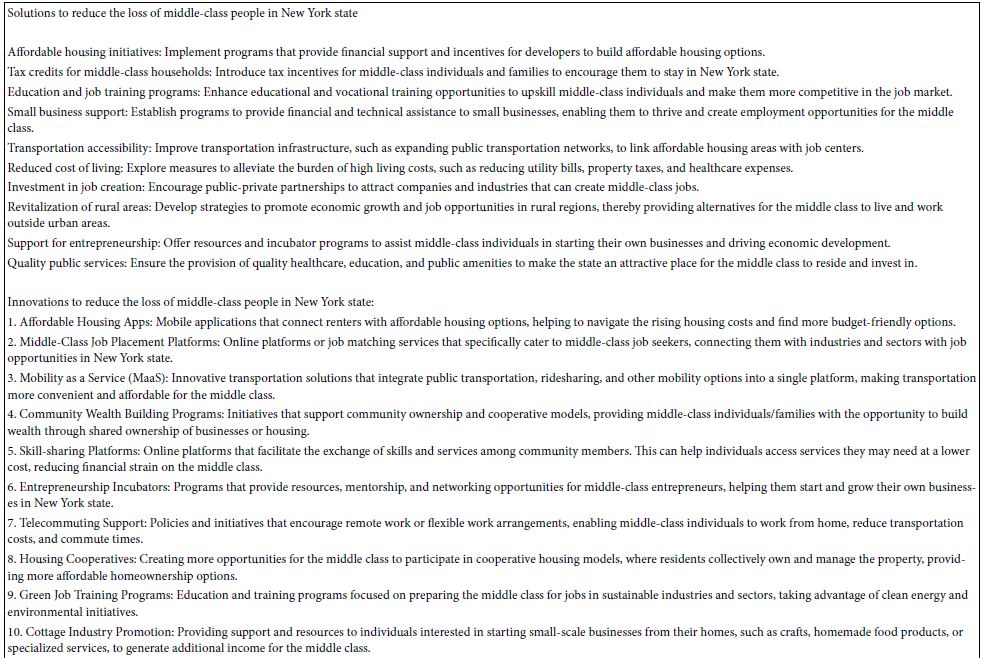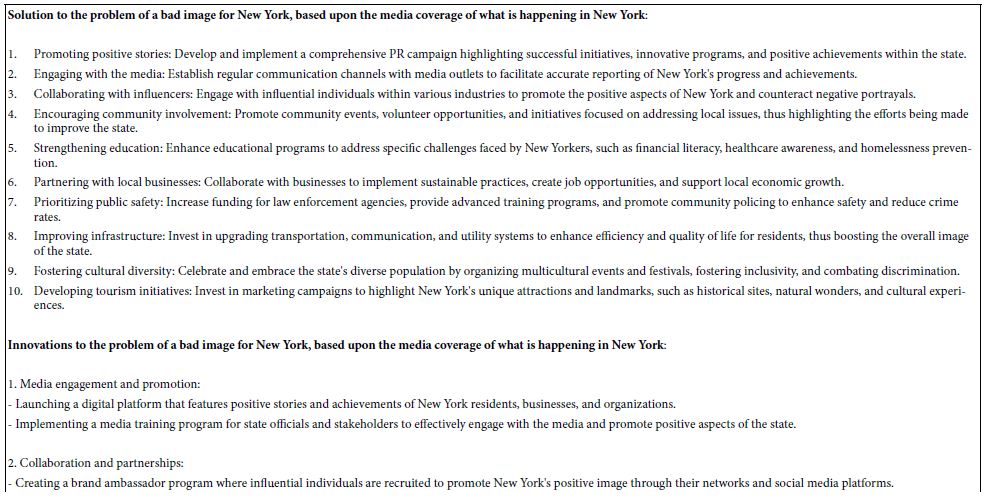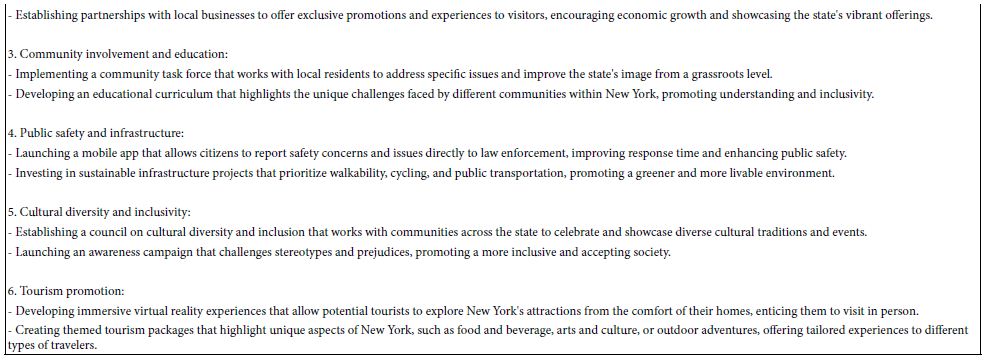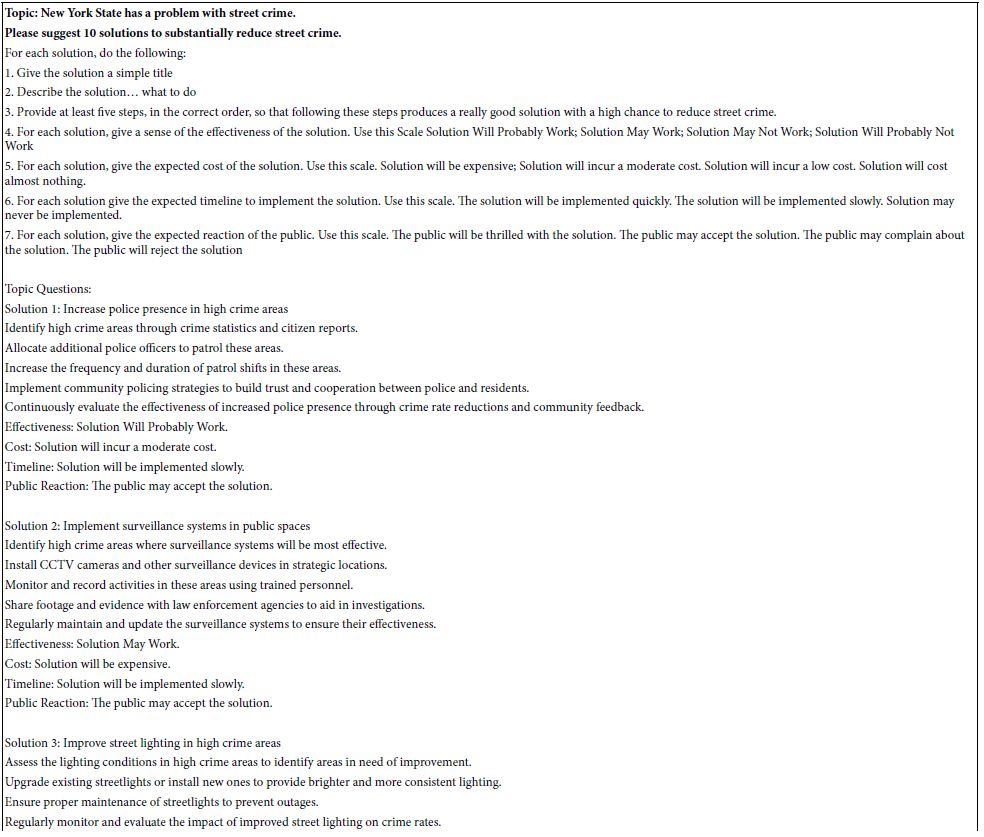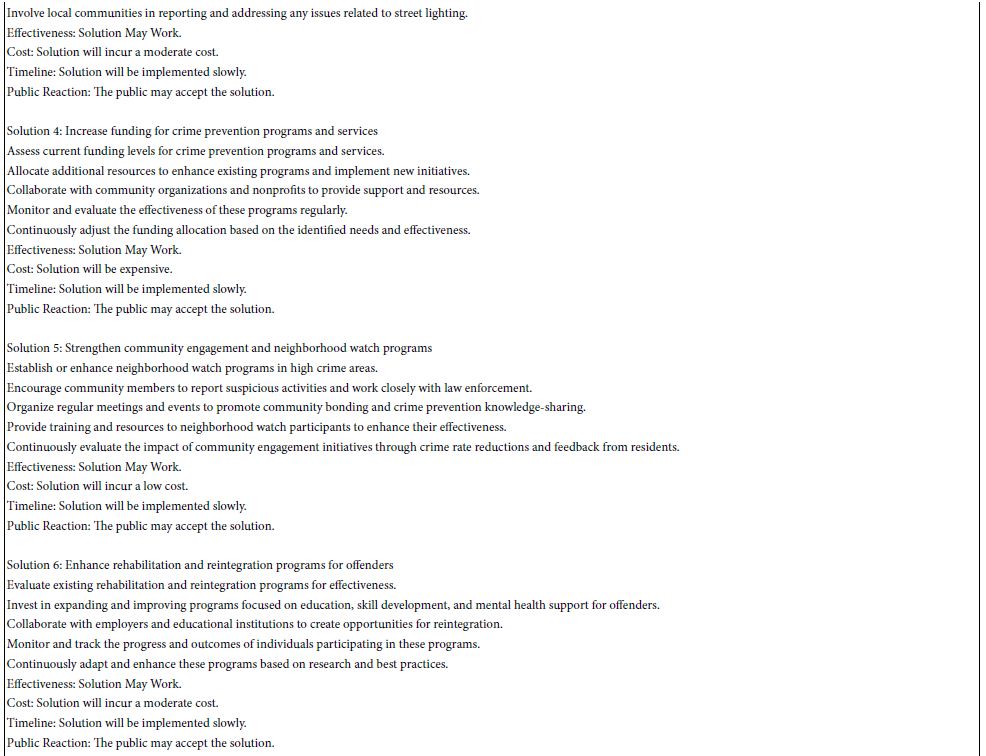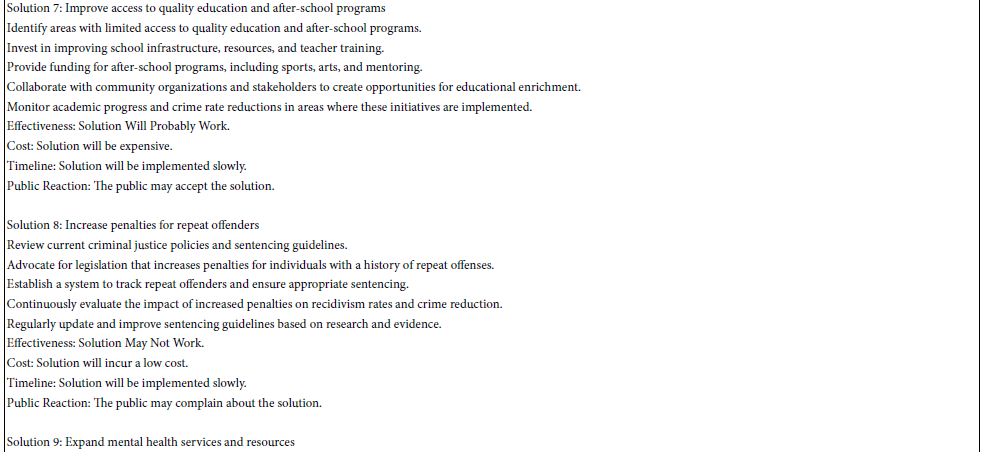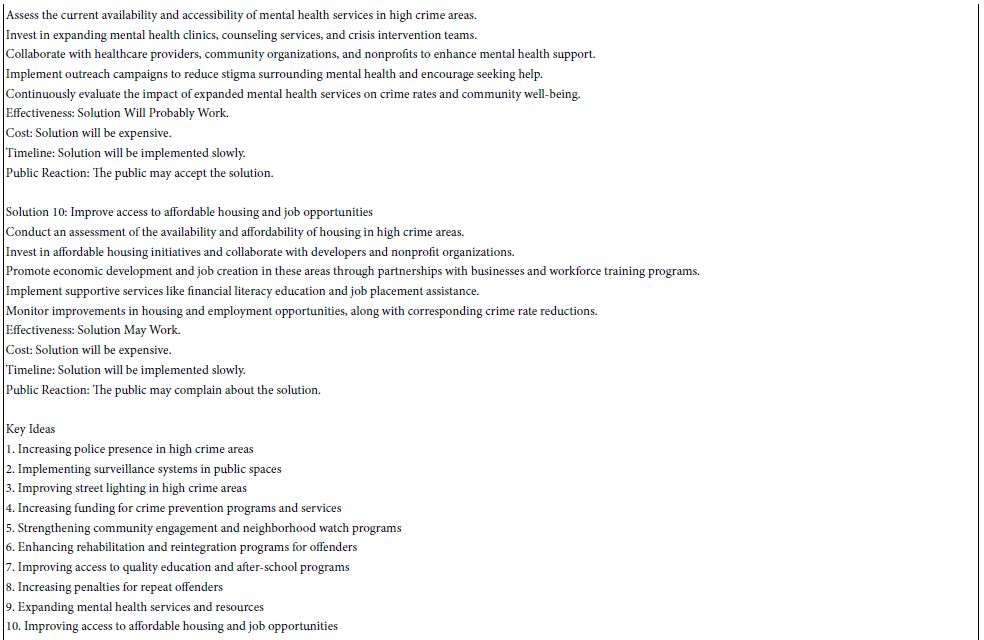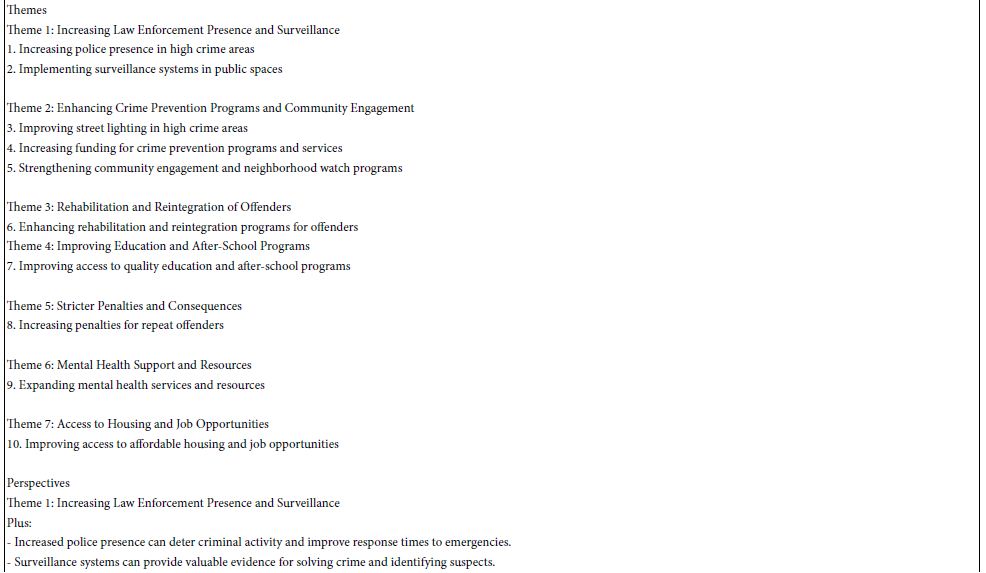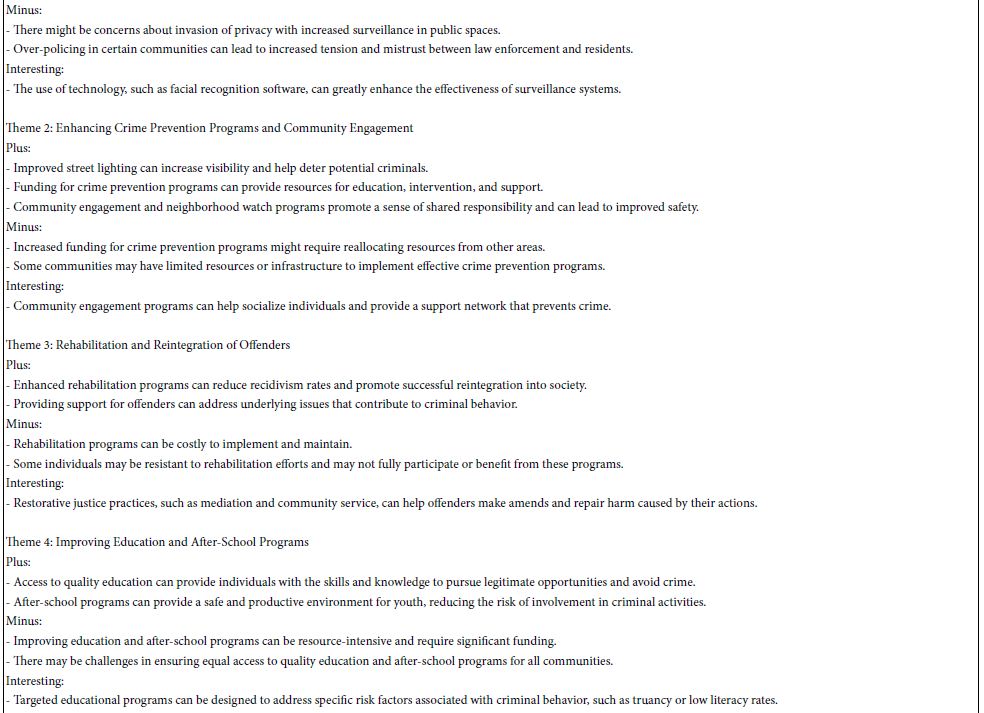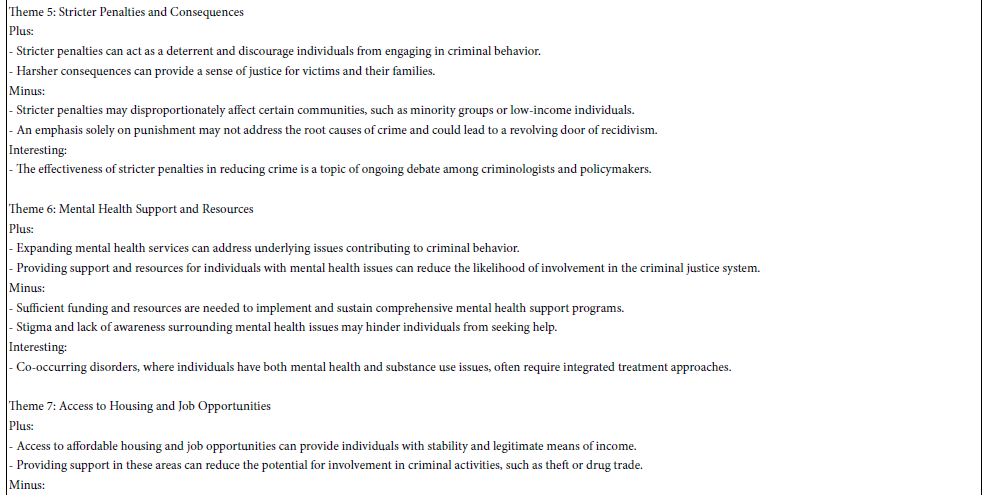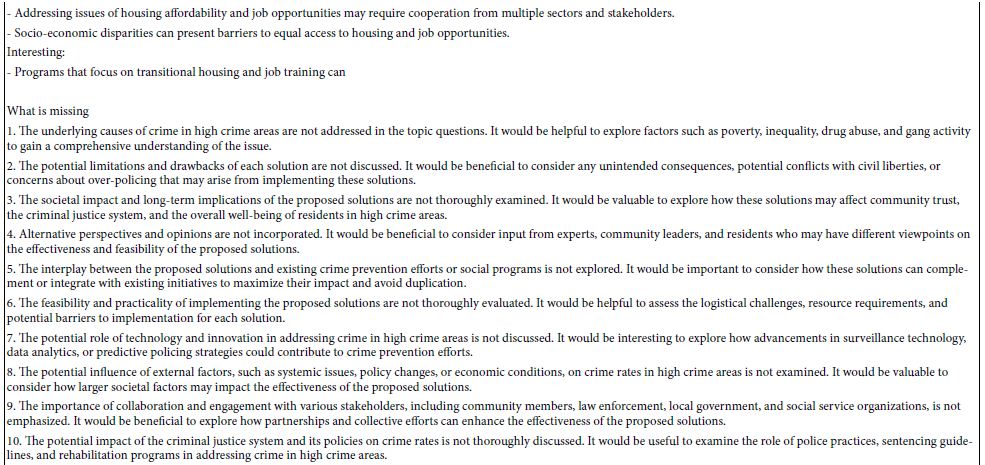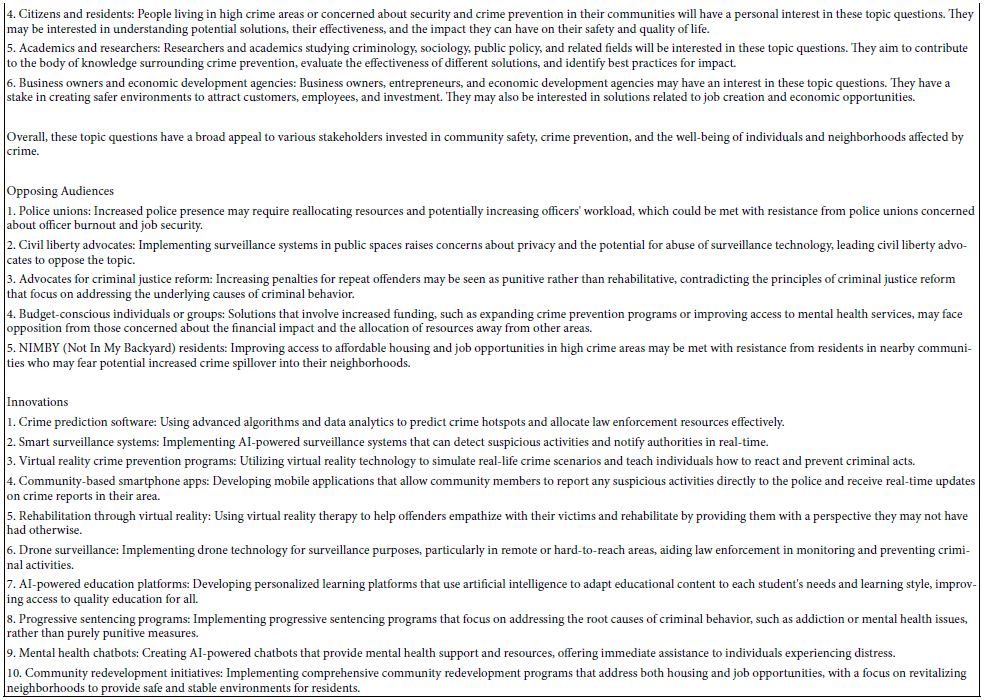DOI: 10.31038/PEP.2024412
Abstract
Idea Coach, an AI-empowered program, was instructed to provide suggestions and innovations for dealing with eight problems plaguing the state of New York. These problems reflect different areas of civic distress (e.g., crime-plagued streets), economics (e.g., flight of the middle class from NY), and so forth. Idea Coach was often able to deliver meaningful suggestions about how specifically to ameliorate the specific problem, and recommend intuitively meaningful innovations to consider for the future. This exercise suggests the promise of using AI in the form of Chat GPT3.5, as a way to create a quick overview of problems and their solutions. The paper highlights the benefit of AI as providing an education about a problem, with the education accomplished quickly (a matter of minutes), inexpensively (low cost for the use of the platform), and iteratively (many alternatives proposed for consideration across successive and easy repetitions of the exercise).
Introduction
As the century progresses, or in truth as history progresses, often the bright hope for the future turns into a drab, unpleasant, and of course disappointing present, and over time that present becomes a past to mourn. As poet John Greenleaf Whittier wrote so touching in ‘Maude Muller’, ‘of all sad words of tongue and pen, the saddest are it might have been.’
Government is presumed to be at the service of people. In free countries people are presumed to elect those who can give them a better life. And yet, repeatedly we are treated to noble visions and hopes turned into shattered dreams. Is it possible to create lists of things to improve society without having to spend extraordinary amounts of money on experts, consultants, consumer research ranging from qualitative groups (in-depth interviews, focus groups) to massive surveys, done quickly, over the internet, but covering little and all too often over-analyzed?
The introduction of the Internet in the 1990’s was hailed as a new way for people to connect with each other. Solving civic problems was part of the hope. Instead of the expensive interactions between people and the slow-moving efforts, it was often thought that this ‘new wave of communicating’ would generate a better society. People could surface issues better, with the presumption that once enough people and especially ‘experts’ heard about the issue, thought about, discussed ramifications and solutions, that somehow the magic of many minds working together would guide a solution to the problem, and all would be well.
The literature of suggested problem solving for civic problems is enormous. One need only look at Google Scholar to get a sense of the vast literature. Figure 1 shows a screen shot taken January 15, 2024. The topic is ‘solving social problems.’ Google Scholar emerges with more than six million hits (6,230,000 to be exact).
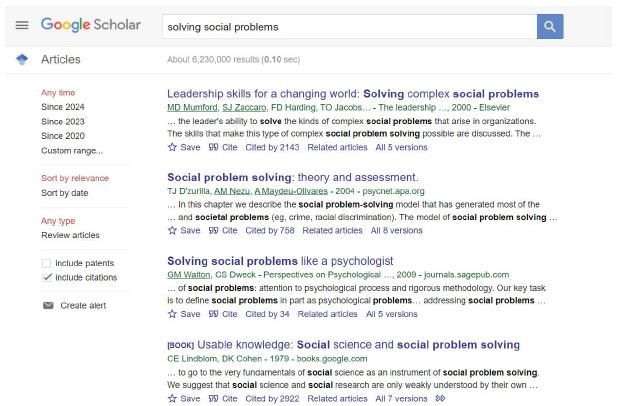
Figure 1: Google Scholar results from searching for papers on ‘solving social problems’.
The number of Google Scholar ‘hits’ drops down by more than half when the topic is more specific, ‘using AI to suggest solutions to social problems.’ The number is 2,810,000 and a longer search time, viz., from 0.10 seconds to 0.22 seconds. Figure 2 shows this screen shot.
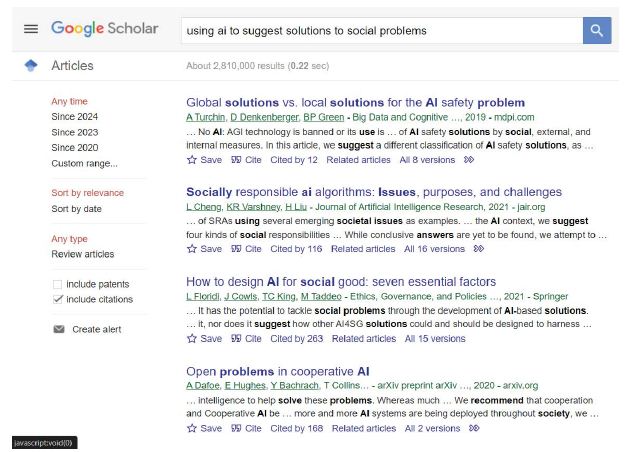
Figure 2: Google Scholar results after ‘using AI to suggest solutions to social problems.’
Many of the papers talk about the promise of AI, and in turn the way AI should be considered, used, and interpreted. The paper in the literature emerge from the careful consideration of a new technology applied to the problem [1,2]. Some of the literature also pertains to the intersection of AI and societal goals, such as those put forward by the United Nations, for the year 2030 [3,4].
This paper moves from a general consideration of AI and social problems to an exploration of specifics, using the AI-empowered Idea Coach found in SaaS (Socrates as a Service, and in Mind Genomics. Both systems use AI in the form of Chat GPT3.5 [5]. They can be accessed directly: Mind Genomics a: www.bimileap.com Socrates as a Service at https://socratesasaservice.com/u/dashboard.
The original reason for the incorporation of AI into these two platforms comes from the frustrations encountered by researchers when investigating a topic using Mind Genomics. Mind Genomics focused on the creation of a set of questions for a topic, and then for each question required the user to create a set of four answers (elements). These ‘elements’ would then be mixed together to create small, easy to read combinations, vignettes. The ratings assigned to these vignettes would be then deconstructed into the contribution of the individual elements as a driver of the vignette. The benefit of this seemingly circuitous approach, replacing simple questions, is that the Mind Genomics projects focused on the ‘granular,’ where reality manifests itself. It was impossible to ‘game’ a Mind Genomics study. The results showed how people made decisions with real-world issues, rather than rating abstract concepts as is often the case with surveys focusing on a topic or focusing on a recent personal experience [6,7].
Within this carefully crafted system the key weakness was that many users felt intimidated by having to ask meaningful questions. To this end, AI was introduced as a guide, appearing to the user to be a seamless add-on to the Mind Genomics process, and given the name ‘Idea Coach’ to encourage the user. Figure 3 shows the initial format of the Mind Genomics effort. Panel A shows the request that the user provide four questions. It was here that the user became discouraged. Panel B shows the rectangle wherein the user writes a squib to describe the need to the AI-empowered Idea Coach, in this case a request to provide questions relevant to the issue of crime in the streets. Panel C shows the output form Idea Coach, comprising four of the 15 questions returned by the Idea Coach.

Figure 3: The sequence of screens showing the request for four questions (Panel A), the use of Idea Coach (Panel B), the output from an iteration of Idea Coach (Panel C), and the request for four answers to Question 1 of 4.
The approach shown in Figure 3 has been used for several two years, as of this writing. The introduction of the Idea Coach substantially enhanced the usability of the Mind Genomics paradigm allowing the researcher to develop questions and answers rapidly. The next steps for Mind Genomics studies were to combine the answers from the four questions into small, easy to read vignettes, combinations of answers (aka element). The vignettes comprised a minimum of two elements, and a maximum of four elements, the vignettes created according to an underlying experimental design. No vignette ever contained two or more elements or answers from a question, but often a vignette failed to contain an element from one, or even from two different questions.
The foregoing approach for Mind Genomics in general, and for Idea Coach in particular, focused on simplifying the creation of vignettes. What was not apparent at the point was the possibility that the AI embedded in Idea Coach could do far more, when properly instructed.
It is the extension of Idea Coach into new areas, specifically into new types of requests that one can make for the AI, and the presentation of the results for this initial foray beyond the simplistic question/answer paradigm.
Method
The approach here uses Idea Coach and thus AI is a new way, doing so in the spirit of Mind Genomics, but pushing the AI to provide all the information when the problem is described. That is, the squib describing the problem also requests alternative solutions, and reasons for the solutions. The squib is far more detailed than the original squibs written to generate questions, and then subsequent squibs which generated alternative sets of answers from the squib.
The paper begins with the first advance, viz., requesting questions and answers to be provided at the outset through Idea Coach. Table 1 shows a slightly expanded squib provided to Idea Coach, and thus constituting the instructions to the embedded AI. The squib comprises several logical sections, as follows:
- The general introduction. Here the introduction talks about New York, specifying the market, and the issue. There is nothing here which can guide Idea Coach about solving any problem.
- Instructions to Idea Coach to make sure that the results are specific, and the solutions are realistic, i.e., one can actually act on them.
- The statemen of the problem, in modest detail, providing some specification
- The request to AI to provide solutions to a specified problem.
It is important to keep in mind that this modification to the use of Idea Coach does not require two squibs, the first being the request for questions, and the second being the request for answers to specific questions. Figure 3 shows that traditional two-step process. Table 1 attempts to collapse the process.
Table 1: The revised process for Idea Coach, attempting to collapse the process into one step to give to Idea Coach.

The remainder of this paper comprises a demonstration of the solutions and innovation for each of xxx problems plaguing New York. When reading the tables one should keep in mind that the problems presented to the AI were very general. Each particular table was created with the same instructions. Only the problem differed The answers, however, were requested to be realistic. The AI was requested to give 10 solutions, a request that was sometimes honored, and sometimes not honored.
The Idea Coach was developed to be iterative (see Figure 3, bottom of Panel C). That is, the user could revise the request to Idea Coach, changing the nature of the problem, the number of requested solutions, and so forth. It is this ‘iterative’ nature of Idea Coach which leads to the format of Table 1. With a simple set of keystrokes the user can re-run the request to create a new set of solutions, or the user can modify the problem, e.g., from street crime to education, and immediately receive an additional set of solutions. Each iteration takes approximately 15-30 seconds, so that a set of 10 problems can be addressed in about five minutes.
After the initial solutions were presented to the user, and after the Mind Genomics program was closed by having the user log-off, a second module of the Mind Genomics platform went to work on the question and the answers, to provide a summarization. The summarization provided this additional information, shown in Table 2. This AI summarization was emailed to the user about 20 minutes after the user logged-off. The result is that within 30 minutes or so, the enterprising user of Idea Coach can investigate ten issues, or one issue ten times, receive results from AI, and then at the end of the process receive a summarized, deeply re-analyzed booklet, with each iteration deeply explored anew by AI.
Table 2: The summarization material provided in the Idea Book, provided to the user after the user logged off from the project.
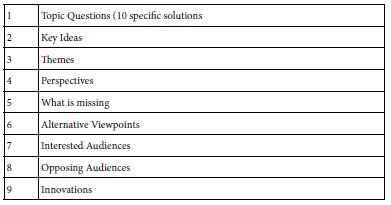
Table 3 shows the first iteration to deal with reducing street crime. Table 4 shows the first iteration to improve education in New York State. Each table is divided into two parts, solutions and innovations, respectively.
Table 3: Solutions to reduce street crime, provided by Idea Coach. The top half of the table shows what is provided at the time of use. Both the top and bottom halves of the table are provided in the Idea Book, sent to the user.
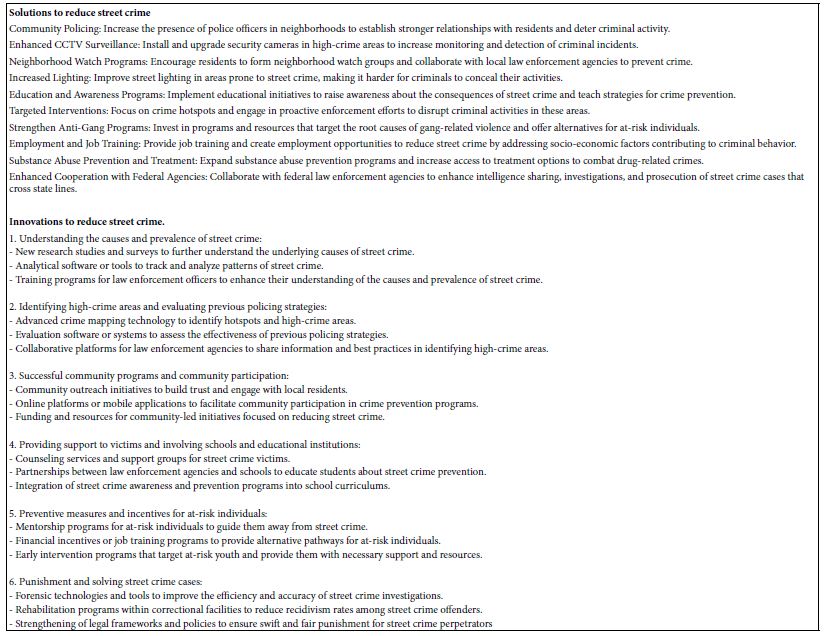
Table 4: Solutions to stop the decline in educational performance in public schools in New York State, provided by Idea Coach. The top half of the table shows what is provided at the time of use. Both the top and bottom halves of the table are provided in the Idea Book, sent to the user.
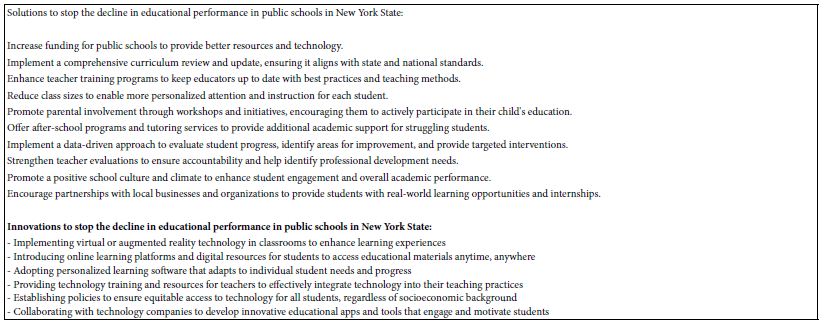
The top part (solutions) presents the information that was returned immediately upon presenting Idea Coach with the squib. This information can be immediately scanned by the user, who can re-run the request to get more solutions, or modify the squib and then re-run it, thus changing the focus of the request to Idea Coach.
The bottom part (innovations) actually comes from the summarization of this information, provided to the user in the Idea Book . Recall that the Idea Book is send to the user about 20 minutes after the user logged-off. The embedded AI in Idea Coach reviews the solutions, and comes up a set of new suggestions, expanding the scope of the already-offered solutions. In this respect, one might say that AI is producing ‘new knowledge.’
Appendices 1-6 to this paper shows the solutions and innovations relevant to each of the remaining problems facing New York State. Appendix 7 shows an example of what the Idea Book returns to the user at post-processing. Appendix 7 presents the full Idea Book page for the second iteration dealing with reducing street crime. The sections of the page are shown in Table 2. Each iteration is separate, so Appendix 7 presents new data, albeit for the same topic of reducing street crime.
Moving from Solutions to Implementation, Assessment, and Expected Public Reaction
Tables 3 and 4 suggest that the AI embedded in Idea Coach can move beyond regurgitating information, and perhaps provide new ideas, or at least ideas that were not originally present in the request. Whether or not the innovations truly represent ‘new information’ is not relevant. What is relevant is the recognition that the AI can be ask to hypothesize about outcomes.
Tables 5 and 6 show the same topics, street crime and education, respectively, this time explored by AI in a deeper way, namely by asking AI to suggest a set of 10 solutions for each general problem. Each solution is to comprise five parts, the solution to be considered as a whole comprising those four parts. For each of the 10 solutions, Idea Coach is instructed to estimate four factors, each on its own unique scale: Effectiveness, Cost, Time, Public Reaction.
Tables 5 and 6 show that Idea Coach can do this task. There is no cautionary statement of impossibility, or that the task is beyond the program. Rather, Idea Coach and thus the embedded AI, returns dutifully with the larger solution, the four components, and then the evaluations.
The results shown by Tables 5 and 6 suggest that the incorporation of AI into the planning, using a simple platform such as Mind Genomics (www.BimiLeap.com) or Socrates as a Service (https://socratesasaservice.com/u/dashboard) present a new opportunity to systematically explore problems and their solutions, in a way which is feasible, fast, relatively complete, and perhaps enlightening and educational for those without deep experience in the topic.
Table 5: Expanded squib for Idea Coach, dealing with street crime. The squib requests 10 solutions, each with several steps, and then the evaluation of the solution on effectiveness, cost, timeline, and expected public reaction.
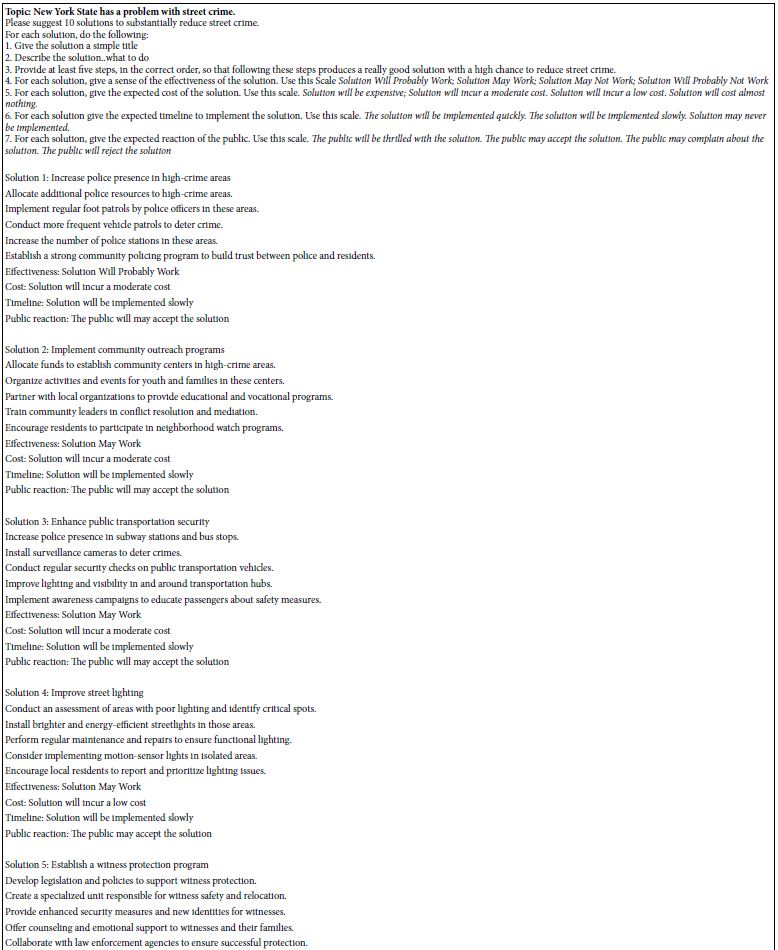
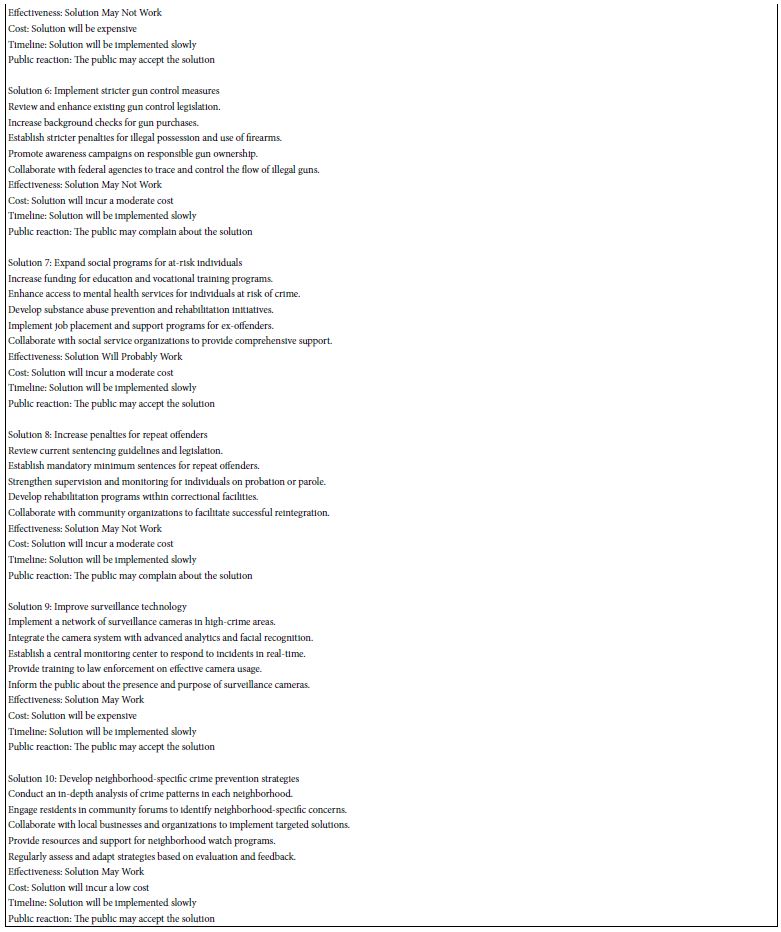
Table 6: Expanded squib for Idea Coach, dealing with street crime. The squib requests 10 solutions, each with several steps, and then the evaluation of the solution on effectiveness, cost, timeline, and expected public reaction.
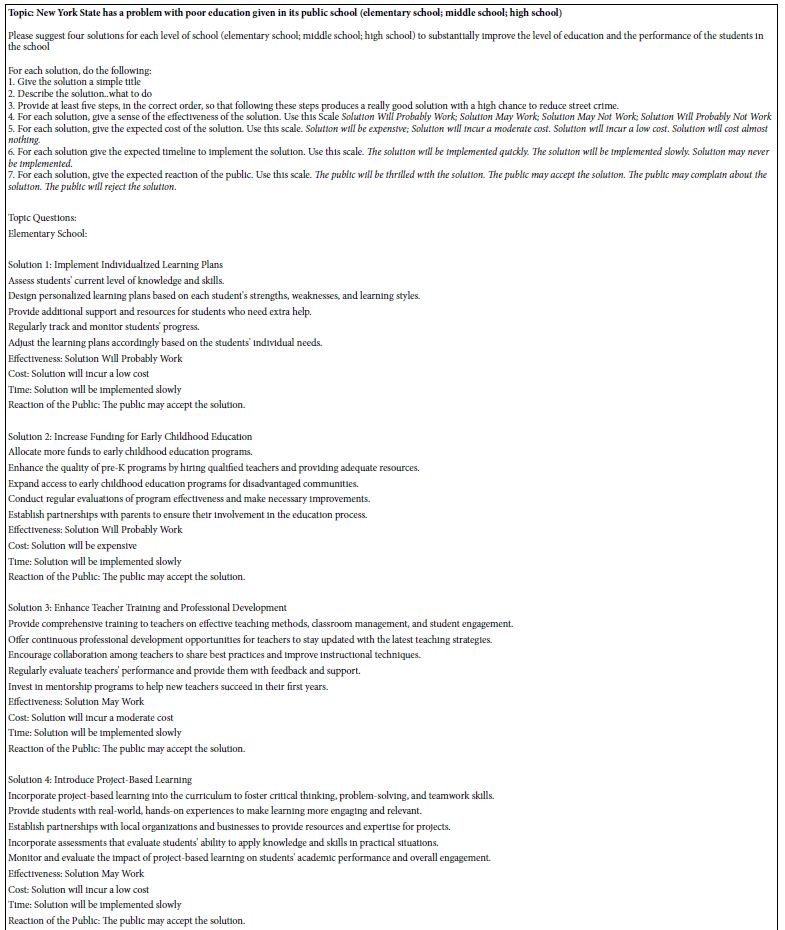
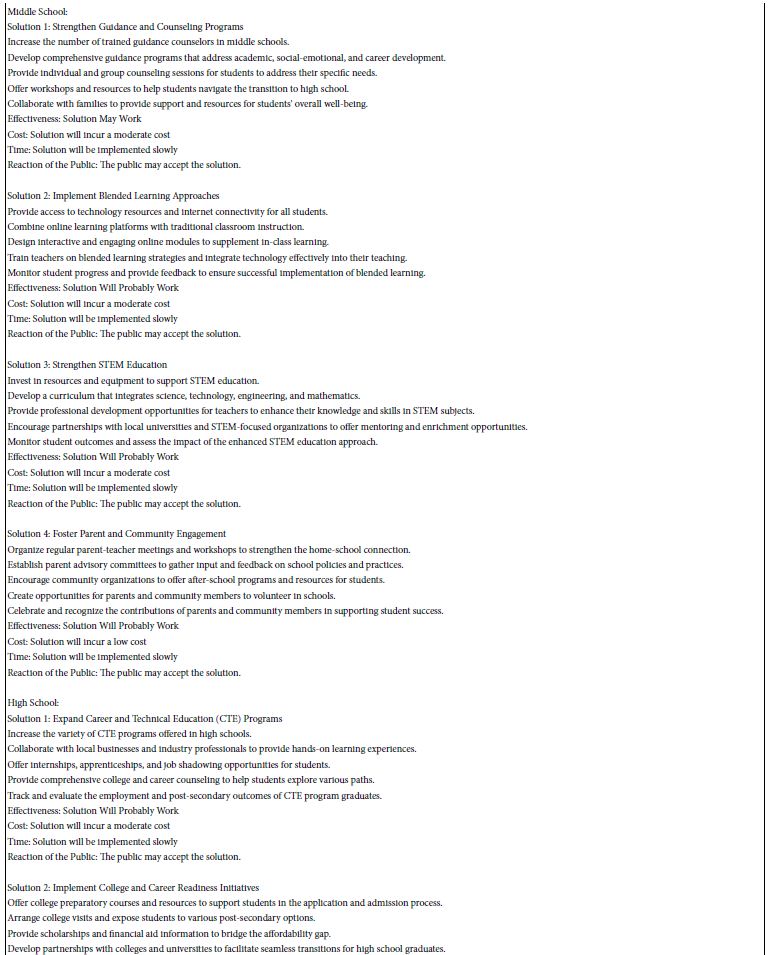
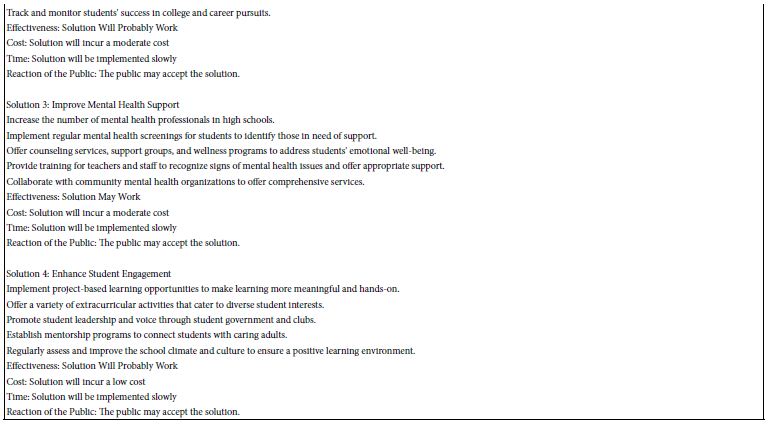
Discussion and Conclusions
This paper began as an effort to demonstrate to senior government officials in New York that the contribution of AI in an easy-to-use format, and even by a novice new to the issues, could be helpful. The initial efforts focused on the traditional use of Mind Genomics, namely, create questions, answers, mix the answers into vignettes, test the vignettes, and discover how people think. That has been the approach, one set up following the dictates of science (e.g., experimental psychology), and especially psychophysics), as well as one using rigorous experimental design to create the test stimuli [8] and analyze the results [9].
As in many efforts in science, that which is planned often evolves into that which ends up being discovered. The role of accidental discovery cannot be overemphasized here. No one was thinking that the Idea Coach squib should be written with a request both to list problems and list answers, and evaluations of those answers in terms of feasibility, cost, timing, and public reception. These were all steps to be taken with caution, slowly, after having studied the issue thoroughly, done one’s so-called ‘homework’, and then suggesting an educated opinion after having been immersed in the problem.
Nothing could have predicted either the initial results, nor the reactions to efforts and finally to the expansion of the request made by AI. The results shown in Tables 5 and 6, as well as in Appendices 1-6 confirm the dramatic ease with which new ideas can be quickly investigated, perhaps for themselves, or perhaps as steps prior to consumer research. Certainly, it is to be expected that researchers who have done the type of pre-work shown in Tables 5 and 6, as well as in Appendices 1-6, are likely to recognize good answers when they appear, simply because of their easy-to-obtain experience with the Mind Genomics world.
The approach presented here touches on a variety of topics, ranging from the application of Mind Genomics and Idea Coach real world issues, and the implication for philosophical issues brought up by the readable results and judgments provided by AI (Tables 5 and 6; Appendix 7). It is clear that the results suggest practical suggestions that can be tested empirically to determine the degree to which the AI appears able to prescribe solutions for problems ‘picked at random’.. More puzzling, however, is the ‘seeming capability’ of AI to judge the difficulty and the outcome of courses of actions. Perhaps the machines really do have so-called ‘tacit knowledge’, but from where would this deep knowledge come from, a knowledge which makes the answers so realistic? [10-12]. Despite these issues, however, and no matter what the deeper reality may be, demonstrations of the ability of AI to help in the formulation of policy for social issues seem destined to drive an increasing acceptance of AI as a collaborator to create a better society.
References
- Floridi L, Cowls J, King TC, Taddeo M (2021) How to design AI for social good: Seven essential factors. In: Floridi, L. (eds) Ethics, Governance, and Policies in Artificial Intelligence. Sci Eng Ethics. [crossref]
- Tomašev N, Cornebise J, Hutter F, et al (2020) AI for social good: unlocking the opportunity for positive impact. Nat Commun. [crossref]
- Baum SD (2021) Artificial interdisciplinarity: Artificial intelligence for research on complex societal proble Philosophy & Technology 34 (Suppl 1): 45-63.
- Vinuesa R, Azizpour H, Leite I, et al. (2020) The role of artificial intelligence in achieving the Sustainable Development Goals. Nat Commun. [crossref]
- Herbold S, Hautli-Janisz A, Heuer U, et al. (2023) A large-scale comparison of human-written versus ChatGPT-generated essays. Scientific Reports.
- Porretta S, Gere A, Radványi D, Moskowitz H (2019) Mind Genomics (Conjoint Analysis): The new concept research in the analysis of consumer behaviour and choice. Trends in Food Science & Technology.
- Moskowitz D, d Moskowitz H (2012) Conjoint analysis plus (cross category, emotions, pricing and beyond) Product Innovation Toolbox: A Field Guide to Consumer Understanding and Research 192-223.
- Gere A,Radvanyi D, Moskowitz H (2017) The Mind Genomics metaphor-From measuring the everyday to sequencing the mind. International Journal of Genomics and Data Mining 110.
- Moskowitz HR, Gofman A, Beckley J, Ashman H (2006) Founding a new science: Mind genomics. Journal of Sensory Studies 21: 266-307.
- Dahl T (2000) Text summarisation: From human activity to computer program. The problem of tacit knowledge. HERMES-Journal of Language and Communication in Business 25: 113-131.
- Holtel S (2016) Artificial intelligence creates a wicked problem for the enterprise. Procedia Computer Science 99: 171-180.
- Lu H, Li Y, Chen M, et al. (2018) Brain intelligence: go beyond artificial intelligence. Mobile Networks and Applications 23: 368-375.

